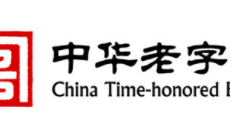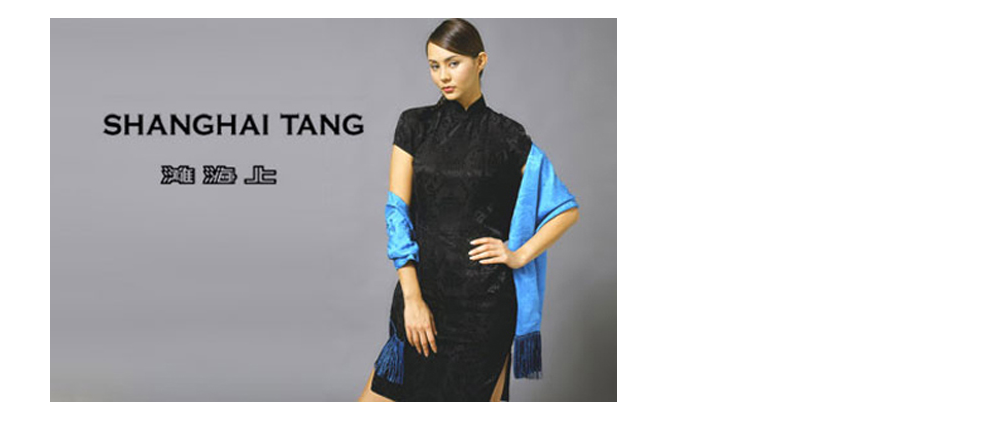

The resurgence of vintage brands has been a notable trend in the West over the past five years, and it shows no signs of slowing down. Brands that were iconic in the ’80s and subsequently faded into obscurity have experienced a rejuvenation, finding a new lease on success. A prime example is Converse All Stars, which has reclaimed its popularity after years of dormancy. Similarly, China boasts a plethora of vintage and traditional brands, often referred to as “lǎo zì hào” (老字号). However, the challenge lies in the fact that many people are unaware of their existence, and even fewer recognize the untapped equity embedded within these brands. Exploring effective branding strategies for Chinese traditional companies becomes paramount in unlocking the hidden potential of these vintage gems.
[For a detailed history of China’s vintage/heritage brands check the “A Look At History” at the end of the article]
Regrettably, many of these brands have acquired negative identities over the past decades due to their failure to align with the evolving demands of today’s consumers. Consequently, the younger generation views these products as outdated, associating them with something their parents would purchase. Furthermore, prior to the official protection of lǎo zì hào brands in 1991, numerous small companies produced low-quality imitations, tarnishing the reputation of these traditional brands and diminishing their market share. Despite the prevailing negative perceptions, lǎo zì hào brands possess inherent qualities that argue against their abandonment, presenting a compelling case for the formulation of effective branding strategies for Chinese traditional companies.
For one, many of the lǎo zì hào brands still have enormous followings among older market segments. As older people talk about the reliability and the family tradition of using certain lǎo zì hào brands, firms benefit from word-of-mouth marketing. Not wanting to change their habits, the older generation would be unwilling to abandon lǎo zì hào products without a good reason, allowing the lǎo zì hào to maintain their presence in certain segments of the market.

Although some lǎo zì hào products have lost their reputation, other Chinese traditional products have managed to maintain theirs. For example, as mentioned in a previous Labbrand article “Chinese Luxury Brands on the Move,” Chinese liquor firms 茅台(máotái) and 五粮液(wǔliángyè) benefit from having no competitors producing similar liquor. New market entrants are unable to establish the same reputation these traditional firms achieved over centuries in a short period of time. For traditional products, the Chinese believe the firm with the longest history must have the highest quality due to their continued production of the same product.
Additionally, the lǎo zì hào brands receive strong government support to protect and promote their brands. In 2005, the Ministry of Commerce put laws into place for new lǎo zì hào designations, thereby providing bureaucratic and marketing support for the original lǎo zì hào to fight off potential misuse by smaller firms. Traditional Chinese firms may also be able to receive government financial support if needed to invest more in branding and ongoing operations.
Several branding measures can be taken by lǎo zì hào firms to revitalize the traditional brands in the market and reverse their declining economic fortunes.
First, the lǎo zì hào brands can be promoted through cooperation with other industries, for example, the tourism industry. Traveling to historical locations is a big theme in Chinese tourism, and by stressing their local heritages, the lǎo zì hào brands can be marketed to travelers as “local specialties” by offering their products at the historical locations. As tourism in a locality flourishes, the “local specialty” will benefit, allowing the associated lǎo zì hào to prosper both at the location and then through nationwide retail.

Another possibility is cooperation with the media. Historical drama series are a staple of Chinese television and presenting lǎo zì hào both directly and indirectly in the drama can increase their brand visibility. An outstanding example is 岭南药侠 (lǐngnányàoxiá), a drama series on the life stories of 王老吉(wánglǎojí), the founder of 王老吉凉茶(wánglǎojí liángchá), a Guangdong-based lǎo zì hào and manufacturer of herbal tea. The firm used the opportunity to introduce a new canned version of the herbal tea made famous by the drama series. The canned herbal tea was able to gain a strong foothold in beverage market, greatly increasing the revenues for the firm.
Above and beyond these tactical considerations, perhaps the single most important branding strategy that needs to be implemented by the lǎo zì hào is a clear redefinition of their positioning in the market. While many lǎo zì hào products were simply sold to everyone in the past, today’s increasingly complex divisions of consumer groups will force them to target specific audiences in order to avoid unnecessary competition and raise brand value. Specifically, there are three ways for a niche to be generated:
1. Redefine the lǎo zì hào as both a domestic and international luxury brand by attracting foreign and new Chinese elites who are interested in the exotic nature of the Chinese tradition. The lǎo zì hào must establish a sense of product superiority through unique design, high quality materials, and an emphasis on usage by imperial and/or other prominent families in the past. The Chinese lǎo zì hào can learn from foreign-owned Shanghai Tang, a luxury brand founded in 1994 successful in marketing traditional Chinese style apparel to wealthy foreign Sinophiles through small boutique shops.

2. Combining traditional status with modern technology to compete internationally on equal basis with other domestic and foreign manufacturers. Lǎo zì hào’s over-emphasis on preservation of tradition should not eclipse marketing of cutting-edge functions and features of the product. Shanghai Watch, while not an officially designated lǎo zì hào, has achieved some revival by stressing both historical heritage and quality watch components. They are positioning themselves as a high-end fashion or luxury brand similar to Rolex.

3. Target the growing market for vintage goods. Many young people, especially in the West, are turning to older styles, even antiques, for everyday use as fashion statements. One example is the circa-1960s designs used by athletic shoes of Chinese manufacturers 回力 (Warrior), 飛躍 (Feiyue), and 双星 (Double Star). Again, even though none are official lǎo zì hào, their shoes using the same designs for decades have recently been sold for high prices at fashionable stores in the West (such as Galeries Lafayette) among youngsters seeking a “vintage” style.
All in all, the key for the revival of the lǎo zì hào is a clear understanding of the modern marketplace. While it is clear that the old people who grew up with the brands from childhood are becoming fewer and fewer, the lǎo zì hào can still retain past glory through innovative branding measures. By knowing exactly who to target and how to modify the brands to attract the target markets, the lǎo zì hào can raise their brand value and continue to grow in the new market as they have in the past centuries.
In the early days of the People’s Republic of China (PRC) and during the Cultural Revolution, nationalization policies and prevailing ideologies led to the disappearance and destruction of many traditional Chinese brands with centuries of operations. Despite this, nearly 2000 Chinese traditional firms have managed to survive. In 1991, the former Ministry of Internal Commerce officially designated approximately 1600 brands across China as 中华老字号 (China Time-Honored Brand). These brands shared the common characteristic of having “prominent Chinese traditional cultural backgrounds supported by practices passed down through generations.” The lǎo zì hào designation was typically bestowed upon firms established during the Ming and Qing Dynasties, as well as pre-PRC Republican China. Effective branding strategies for Chinese traditional companies are essential to navigate the complexities of their historical context and modern market dynamics.
Yet, despite official proclamations, the economic situations of Chinese heritage brands are generally dire. Of the some 1600 brands declared lǎo zì hào, only roughly 30% of their parent firms are still in continuous operation. The remaining firms are on the verge of bankruptcy due to large operational losses and heavy debt despite being in possession of government-designated lǎo zì hào brand names.
Much of the economic problems Chinese heritage brands have been experiencing in the latest year is directly due to the competition they’re have been facing from both foreign and domestic brands since China’s market opening.
In fact, many have not kept up with the changing taste of the new generations. They continued to produce products for which demands have waned as technology and economic status have developed. For example, 飞人, a Shanghai-based manufacturer once famous throughout China and Southeast Asia for home-use sewing machines, did not revamp product designs and functions accordingly to different modern clothing styles and thus quickly lost market share to up-and-coming manufacturers in the late 1980s and early 1990s.
Whereas the surviving heritage brands are part of Chinese older generation’s life, the younger generation does not welcome their conservative nature. Young people do not like using the same or similar products used by their parents and grandparents. Without accommodating more progressive mindsets, heritage brands can never gain a foothold in the increasing large base of “new” consumers who have not grown up using the lǎo zì hào brands.
Moreover, Chinese heritage brands have struggled to recover lost domestic markets through foreign expansion. The sense of tradition associated with lǎo zì hào has limited resonance for foreign consumers who are unfamiliar with the history of these brands and their significance in the eyes of older Chinese generations. Simultaneously, many lǎo zì hào face challenges in foreign branding, as their traditional and auspicious-sounding Chinese brand names, exemplified by establishments like Shanghai restaurant 老正兴 (meaning “old righteous prosperity”), lose their meaning in foreign translations. Despite these challenges, some small merchants have sought to capitalize on the past glory of lǎo zì hào. Before the effective official protection of lǎo zì hào brands in 1991, companies in various industries registered these brands to exploit the fame of the originals. However, the inability of many small firms to guarantee product quality damaged the reputation of the authentic lǎo zì hào, further diminishing their market share. In light of these complexities, effective branding strategies for Chinese traditional companies are crucial for revitalization.
As this article demonstrates, although the lǎo zì hào brands have had a shaky past, there is still hope for their future.
A Labbrand Group Company © 2005-2025 Labbrand All rights reserved
沪ICP备17001253号-3To improve your experience, we use cookies to provide social media features, offer you content that targets your particular interests, and analyse the performance of our advertising campaigns. By clicking on “Accept” you consent to all cookies. You also have the option to click “Reject” to limit the use of certain types of cookies. Please be aware that rejecting cookies may affect your website browsing experience and limit the use of some personalised features.